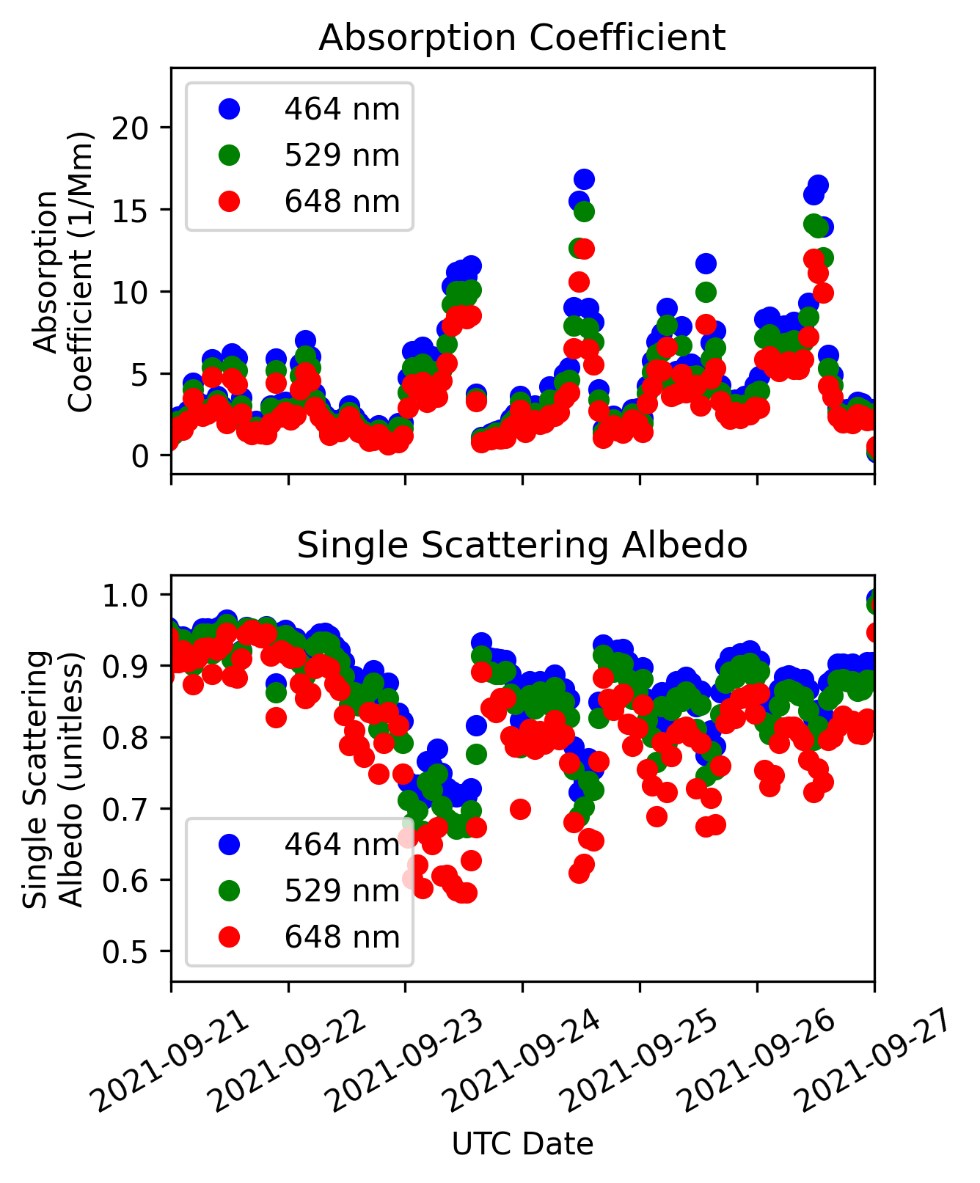Aerosol Optical Properties Data Released for TRACER, SAIL Campaigns
Published: 17 January 2023

The Aerosol Optical Properties value-added product (AOP VAP) is now available for two recent mobile deployments conducted by the Atmospheric Radiation Measurement (ARM) user facility.
The TRacking Aerosol Convection interactions ExpeRiment (TRACER) recently ended after a year of operations near Houston, Texas. Meanwhile, the 21-month Surface Atmosphere Integrated Field Laboratory (SAIL) campaign is ongoing until June 2023 near Crested Butte, Colorado.
AOP contains, in a single file, most relevant intensive and extensive aerosol optical properties measured from in situ instruments. For SAIL and TRACER, AOP combines light absorption data from a particle soot absorption photometer and scattering measurements from a nephelometer, and it calculates the aerosol optical properties at three wavelengths.
Calibrations and corrections are applied to both the scattering and absorption data to yield a consistent data product with uniform application of literature corrections.
These measurements are used to understand how aerosols absorb and scatter light and, ultimately, to understand radiative forcing. Scientists can use the AOP data to improve the understanding of aerosol radiative forcing in earth system models. The optical absorption measurements may also be used to infer the quantity of black carbon in the atmosphere. Scattering measurements can be used to derive aerosol mass loadings and, in some cases and with additional assumptions, an aerosol size distribution.
TRACER AOP data are available for the campaign’s full duration from October 1, 2021, to September 30, 2022.
AOP data for SAIL are available from September 2, 2021, to about 1-2 days before the current date. There is a two-week gap in October 2021 due to the relocation of ARM’s Aerosol Observing System from the main ARM Mobile Facility site in Gothic to the supplementary site at Crested Butte Mountain Resort.
Both data sets are provided at 1-minute or 1-hour time resolution.
Learn more about AOP on the VAP web page.
Access the data in the ARM Data Center. (Go here to create an account to download the data.)
For questions or feedback about the data, please contact ARM aerosol translator John Shilling or VAP developer Brian Ermold.
Data can be referenced as doi:10.5439/1369240 for 1-minute data and doi:10.5439/1369241 for 1-hour data.
Keep up with the Atmospheric Observer
Updates on ARM news, events, and opportunities delivered to your inbox
ARM User Profile
ARM welcomes users from all institutions and nations. A free ARM user account is needed to access ARM data.


















